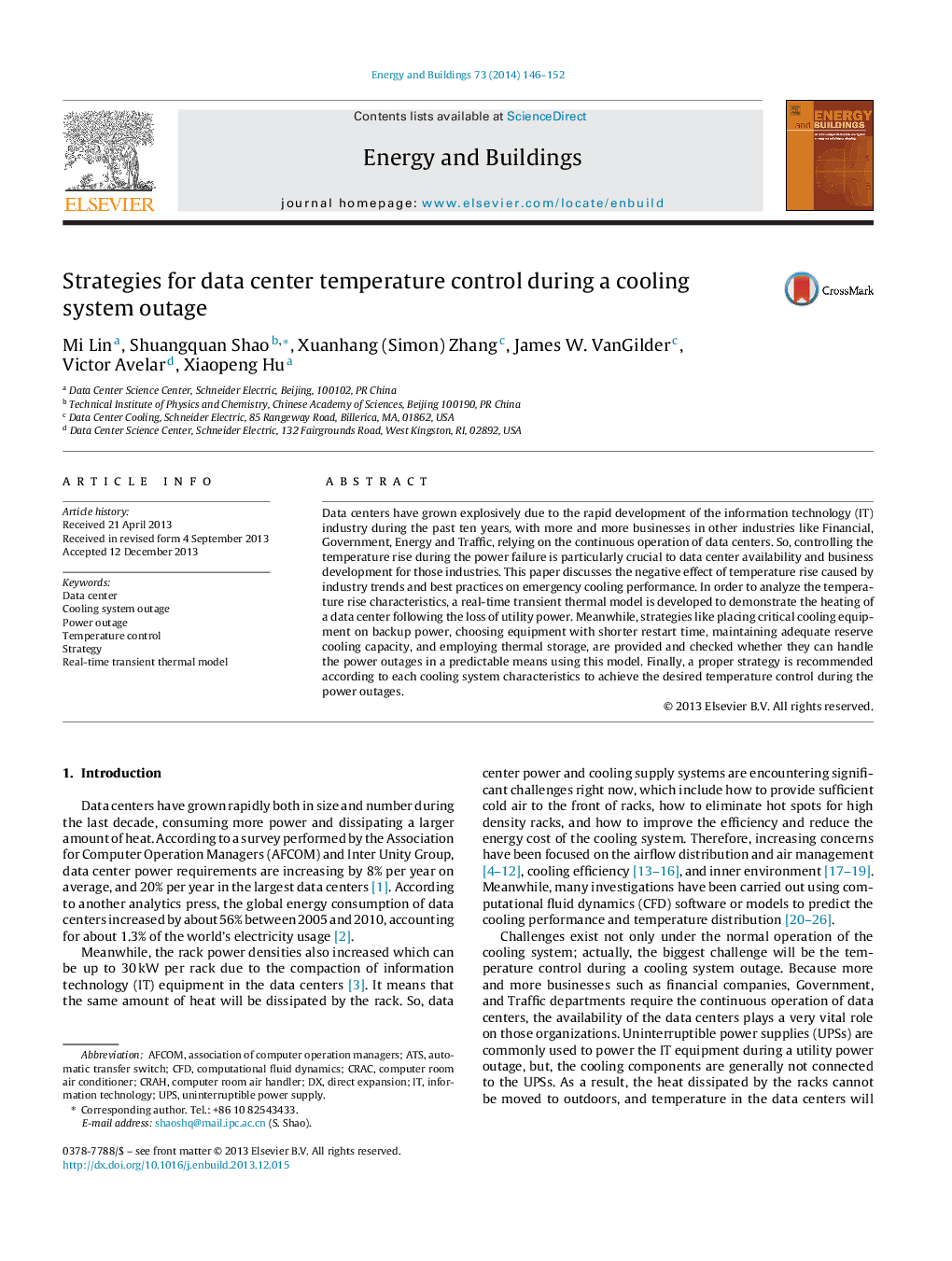| Article ID | Journal | Published Year | Pages | File Type |
|---|---|---|---|---|
| 262966 | Energy and Buildings | 2014 | 7 Pages |
•A real-time transient model is developed for temperature prediction of data center.•Temperature rise of data center is investigated during a cooling system outage.•Four strategies for controlling the temperature rise are provided and examined.•A suitable strategy is recommended according to the cooling system characteristic.
Data centers have grown explosively due to the rapid development of the information technology (IT) industry during the past ten years, with more and more businesses in other industries like Financial, Government, Energy and Traffic, relying on the continuous operation of data centers. So, controlling the temperature rise during the power failure is particularly crucial to data center availability and business development for those industries. This paper discusses the negative effect of temperature rise caused by industry trends and best practices on emergency cooling performance. In order to analyze the temperature rise characteristics, a real-time transient thermal model is developed to demonstrate the heating of a data center following the loss of utility power. Meanwhile, strategies like placing critical cooling equipment on backup power, choosing equipment with shorter restart time, maintaining adequate reserve cooling capacity, and employing thermal storage, are provided and checked whether they can handle the power outages in a predictable means using this model. Finally, a proper strategy is recommended according to each cooling system characteristics to achieve the desired temperature control during the power outages.
